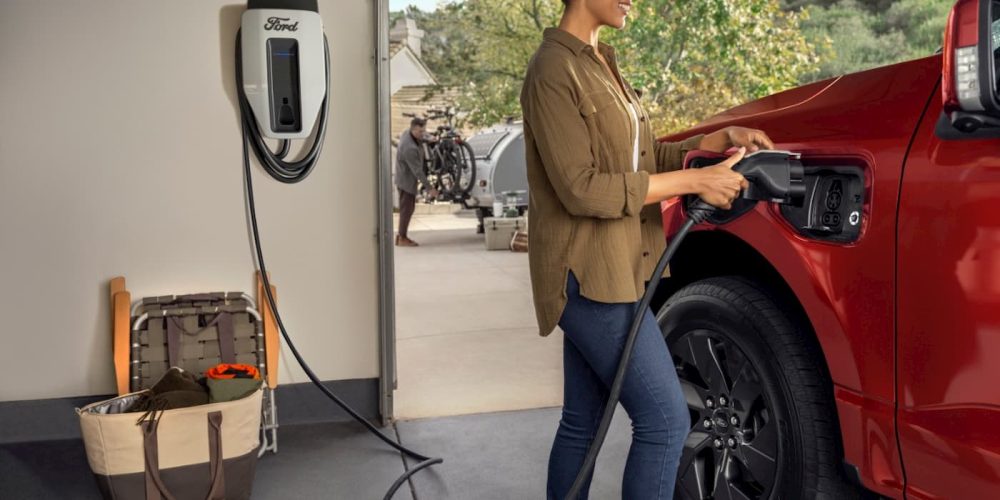
You know how frustrating it can be if you’ve lost power for several days (or weeks). No running water and your internet, refrigerator, and other kitchen appliances are down – it’s complete darkness at night. Electric vehicles featuring large, powerful batteries and bidirectional charging capabilities are helping keep the lights as extreme weather events like hurricanes are on the rise.
Extreme weather events like hurricanes, wildfires, excessive cold or heat waves, and floods are increasing in frequency and intensity.
In the last 21 years, around 83% of major power outages have been attributed to weather-related occurrences, according to a recent report from the nonprofit group Climate Central.
The rising extreme weather simultaneously increases the demand for electricity while limiting the ability to supply it. Last year, weather-related disasters cost the US nearly $182 billion.
To limit this, the US and nations worldwide are deploying solutions, such as solar and wind energy with added battery storage, to stash energy for when it’s needed most.
However, until this technology is applied on a mass scale, electric vehicles offer another means of providing backup power. Automakers are introducing electric cars like the Nissan Leaf with bidirectional capabilities that send energy to and from the EVs battery.
Ford took it a step further, rolling out vehicle-to-home (V2H) capabilities, or what Ford calls Intelligent Backup Power. The Ford F-150 Lightning electric pickup comes with up to 131 kWh of electric energy storage, which Ford claims is enough to power an average-sized home for up to 10 days.

Electric vehicles save the day after Hurricane Ian
Hurricane Ian made landfall after unexpectedly hooking into Florida’s southwestern coast on September 28, 2022, as a dangerous category 4 (almost 5) with wind speeds of 155 mph.
After swallowing up much of Florida, the death toll rose to over 100 while knocking out power for over 2.6 million residents, making it the deadliest storm in the state since 1935.
Some residents were spared, thanks to solar energy setups like Babcock Ranch, 12 miles outside of Fort Myers, that had running water, electricity, and internet.
However, other homeowners got creative, using their Ford F-150 Lightning and Rivian R1T as a source of backup energy supply.
A recent post from Bloomberg highlights the EV’s V2H capabilities as Westley and Sarah Ferguson, from Haines City, Florida, used their Ford electric pickup to power essentials.
The Fergusons ran two extension cords from outlets in their Ford Lightning, plugging one into the refrigerator and the second into a power strip. The setup, according to the article, was:
Good enough for them to cook beef stew on an electric stovetop and, afterward, to host another neighborhood couple for an impromptu movie night.
Although powering home essentials is not the first thing that comes to mind when buying a new car, it’s a significant benefit when needed. As Westley Ferguson explains:
You want to use it when you go camping or you’re having a tailgate. Those are the fun party tricks. You don’t really want it to be a lifeline to cook dinner or power lights. But it was definitely nice to have.
Christine Cannella, a Rivian R1T owner from Fort Myers, also used her electric pickup as a backup energy source after Hurricane Ian. Although Rivian EVs do not have V2H abilities like the Ford Lightning, Canella used the EVs outlets to make coffee and cook hot dogs on an electric grill.
One of the worst parts of losing power in Florida during the summer is the heat and humidity you can’t escape without AC. It not only makes it unbearable to humans but pets as well. Quickly thinking, Canella and her cockapoo would sleep in the back seat, turning on “pet comfort” mode for an escape.
Electrek’s Take
Add another benefit of owning an EV to the list. Electric vehicles are saving the day during natural disasters like hurricanes and floods.
This is not the first time people have used their EVs as powerful backup energy sources during disasters. For example, two Ford F-150 Lightning pickups were used as mobile power stations after heavy flooding in Kentucky to help get 10 to 15 families back in their homes per day.
The best part, the EVs used just hit the market in the past year. Imagine how much more advanced this technology will be in a few years. With hurricanes and other natural disasters on the rise, electric vehicles are proving to have added tools for the fight against climate change.
A common question as more car buyers consider an EV is, “What do you do when the power goes out?” This shows electric vehicles can be more resilient during blackouts than suggested.
Gasoline will only get you so far during disasters with extremely complicated supply chains and distribution networks. For example, gas stations were shut down after Hurricane Sandy because they couldn’t receive any supplies. However, EV owners could navigate to towns with power to charge their EVs.
Electric vehicles like the Ford F-150 Lightning and Rivian R1T prove to be more than just zero-emission rides. These powerful electric machines can keep the lights on, provide a means to cook food, and even host others who were not as fortunate during a blackout.
Subscribe to Electrek on YouTube for exclusive videos and subscribe to the podcast.
Author: Peter Johnson
Source: Electrek



